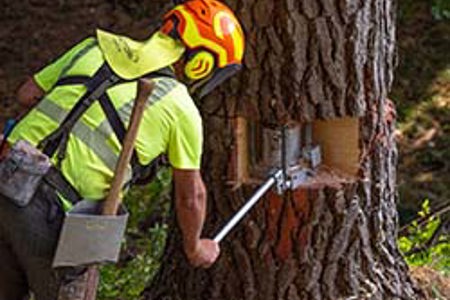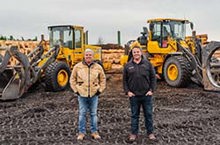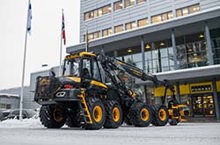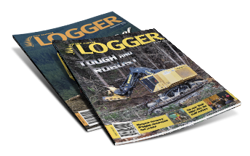
Working in harvesting crews on the East Coast for over 32 years, doing predominantly tall tower difficult terrain logging, Tairawhiti Timber Training’s Alan Paulson would often come across edge trees that were difficult to fall.
“I saw a need for purpose-built tree jacks as a jack is a very safe way of falling difficult trees, requires minimal effort compared to pounding on wedges with a big hammer, and saves cost, especially for a cable crew who do not have to stop yarding as all their edge trees are already on the ground,” he says.
He started “playing around” trying bottle jacks that “weren’t that successful” and, before long, imported a 28-tonne Borntrager tree jack from the United States which “worked really well but didn’t quite have the capacity for a lot of the work I was doing”.
After discussions with Andy Costello at Hikurangi Forest Farms (now Aratu Forests), a forest owner Alan was working with who had a number of archaeological sites in a coastal forest that needed to be preserved, Alan “took a punt” on purpose-built tree jacks and imported the 100-tonne Borntrager tree jack - made up of two 50 tonne cylinders that could be operated individually or together.
The rest, as they say, is history.
To learn more about this technique and its benefits, get your copy of the August 2022 issue of NZ Logger, on sale 1 August. Check the link on this page to subscribe to either a printed or digital copy (or both).









